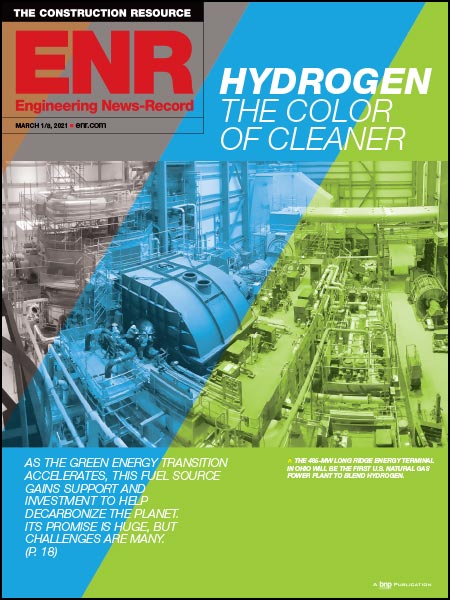Before a cost analysis was done, the team assumed it would use thin-film photovoltaic cell technology. But a competing technology known as crystalline won out because the cost for thin film had skyrocketed and the cost of crystalline had dropped, says HDR's Porter. Also, crystalline's efficiency has increased significantly.
Overall, there are 1,200 PV panels. In addition to rooftop arrays on the main building and nearby parking structures, HDR and Gilbane integrated 33 kW of crystalline PV into a canopy on the lab's south face.
For vertical applications on building exteriors, crystalline PV panels are less friendly to install than thin film because they can't be applied directly to a substrate and must be installed within a frame, says HDR. That meant special detailing.
The PV added about $2 million to the project's cost. But that was fine with Georgia Tech, which received $11.6 million in stimulus funding. Gilbane also bought the PV array from an Atlanta area manufacturer, fulfilling a "Buy American" clause of the stimulus funds.
"Some people who are fond of spreadsheets might look at [the return on investment for solar] as 20 or 25 years," says Georgia Tech's Wertheimer. With so many future builders on campus, the educational influence is immeasurable, he says. "The ROI is Day 1. That's just part of our educational mission."
Editor's Note: This file replaces an earlier file to clarify and correct project details.
| ENERGY EFFICIENCY OPPORTUNITIES | POTENTIAL ENERGY SAVINGS (%)* | METRIC TONS CO2 SAVED |
|---|---|---|
| Daylighting | 14 | 58 |
| Premium efficiency lighting | 15 | 65 |
| LED site lighting | 1 | 3 |
| Premium performing envelope | 19 | 41 |
| Natural ventilation high bay | 5 | 21 |
| Energy recovery | TBD | TBD |
| Solar thermal desiccant regeneration | TBD | TBD |
| Trombe wall | 4 | 13 |
*preliminary estimates, based on ASHRAE averages tbd: to be determined |










---Urban-Mining-Industries-Pozzotive_ENRready.jpg?height=200&t=1663257031&width=200)
